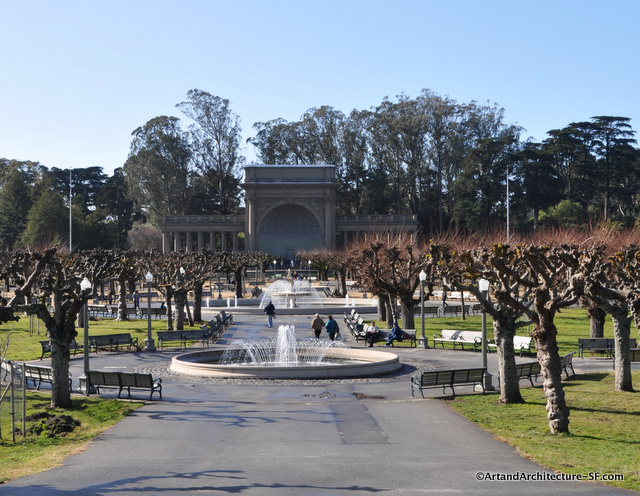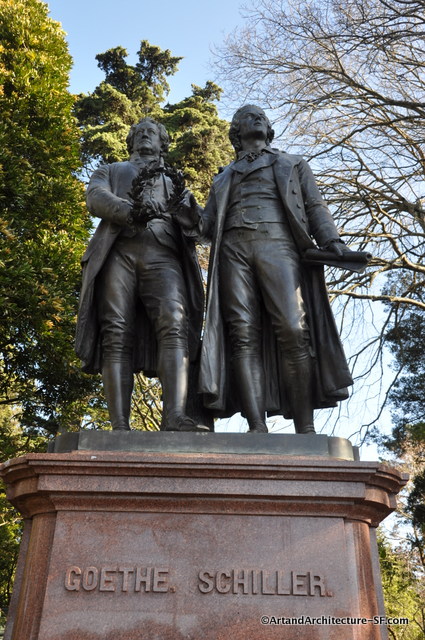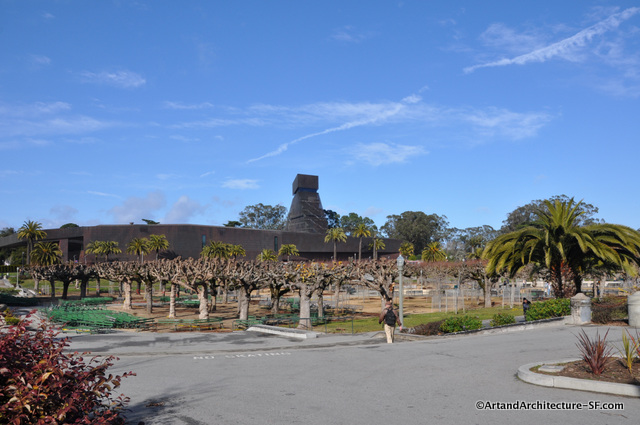 This is the Music Concourse in Golden Gate Park. It is flanked by the new Academy of Sciences and the New DeYoung Museum.
This is the Music Concourse in Golden Gate Park. It is flanked by the new Academy of Sciences and the New DeYoung Museum.
Two important things you should know about Golden Gate Park. It is bigger than Central Park and it was NOT designed by Frederick Law Olmstead.
Golden Gate Park is 1017 acres, Central Park is 843 acres. Golden Gate Park was designed primarily by Botanist John McClaren and Engineer William Hammond Hall, Central Park WAS designed by Frederick Law Olmstead.
This is the first in a series of the statues of Golden Gate Park. Most of them used to be cleverly hidden in inconspicuous locations because John McLaren, the gardener who tended Golden Gate Park for more than 50 years, did not care for statues. In fact, he hated them so much, it is rumored that he took the one that sculptor Earl Cummings created of McLaren himself and hid it in the stables, where it was not discovered until after his death in 1943.
According to the Golden Gate Park superintendent William Hammond Hall “The value of a park consists of its being a park, and not a catch-all for almost anything which misguided people may wish up.” Hall considered the park to be a place to enjoy nature without the trappings of the city, a place that did not include a lot of structures, particularly ones that did not contribute to the true park experience. Yet in an 1873 report to park commissioners about the state of the park, Hall noted, “Some classes of park scenery are fitting settings for works of art, such as statues, monuments, and architectural decoration.”
The statues often move like chess pieces on a board, however, over the years many have been relocated to central locations. Most can be found, either on John F. Kennedy Drive, or on the Music Concourse.
Schiller is holding a scroll, and Goethe is holding the wreath. The bronze figures stand on a pedestal of red Missouri granite. The artist was Ernest Friedrick August Reitschel.
Rietschel was born in Pulsnitz, Saxony. At an early age he became an art student at Dresden, and subsequently a pupil of Christian Daniel Rauch in Berlin. In Berlin he earned an art studentship, and studied in Rome in 1827-28. After returning to Saxony, he became noticed by creating a colossal statue of Frederick Augustus, King of Saxony. He was elected a member of the academy of Dresden, and became one of the chief sculptors of his country. In 1832 he was elected to the Dresden Professorship of Sculpture. He died in Dresden in 1861.
The original Goethe–Schiller Monument is in Weimar, Germany. It incorporates Ernst Rietschel’s 1857 bronze double statue of Johann Wolfgang Goethe (1749–1832) and Friedrich Schiller (1759–1805), who are probably the two most revered figures in German literature.
Four exact copies of Rietschel’s statue were subsequently commissioned by German-Americans in the United States for Goethe–Schiller monuments in San Francisco (1901), Cleveland (1907), Milwaukee (1908), and Syracuse (1911).

Looking forward to the tour of the park!
Golden Gate park is such a treasure! Thanks for the info about the statues, and I look forward to learning more.
The park is huge and I am sure there are many parts and statues I have never seen before.
Sounds like an incredible place and now I have to put a visit there on my bucket list, also? I’ve got as lot to do in a short period of time.
[…] * William McKinely by Robert Ingersoll Aitken The Panhandle is a park that forms a panhandle with Golden Gate Park. The Panhandle is near the geographic center of the city, and forms the southern boundary of the […]